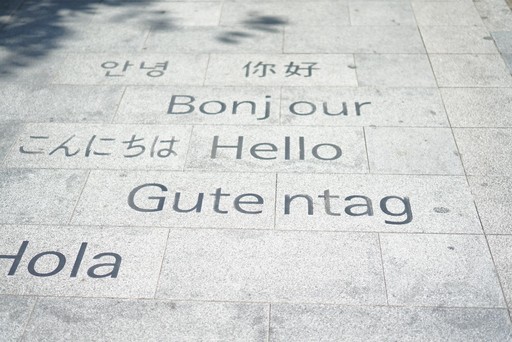
. > WHAT'S NEW > RESEARCH
Tracking changes in Chinese language
Author : PAN YUEFEI Source : Chinese Social Sciences Today 2017-02-27

Historial linguistics reveals the laws and process of linguistic development and the kinship between different languages, and presents the history of differentiation and integration within and between nations.
Historical linguistics is a discipline which encompasses the general theory, methods and principles of language development. It originates from the comparative study of Indo-European languages by European scholars in the late 18th century. Its theory and methods are widely used in exploring the phonetic laws and kinship between Indo-European languages.
Revelation
Chen Qianrui, a literary professor from Renmin University of China, said the development of historical linguistics demonstrates the evolution of human language. Scholars can explore the nature and reasons for language using this process, Chen said.
Yang Yonglong, a research fellow at the Institute of Linguistics at the Chinese Academy of Social Sciences, argued the unique value of the discipline lies in its ability to reveal the laws and process of linguistic development and the kinship between different languages, explain the historical motivations of language synchronic distribution and synchronic divergence, present the relationship between linguistic changes and national integration as well as social development, and even help us to explore and understand the history of differentiation and integration within and between nations.
Chen Zhongmin, a professor from the Department of Chinese language and literature at Fudan University, said the unique value of historical linguistics can be understood from three aspects: First, analysis of the difficulties involved in the origination, evolution and differentiation of human language. Second, several generations of linguists have found many laws of language evolution and research methods, which still play a leading role in the historical research of world languages. Third, related research results are of great value to other disciplines. In this case, anthropologists and historians can discover the migration path of a population by tracking the evolution of its native language.
Comparison
Chen said Chinese has thousands of years of written materials that have rich connotations and plenty of materials to compare and contrast. This helps historians track semantic changes.
Studies of linguistic history cannot be separated from other historical social issues. Chen said the historical background of the formation of East Asian and Southeast Asian languages are different from those of Indo-European languages: there is a long-term central language radiation circle in East Asia and Southeast Asia. The Mandarin of the Central area influences and penetrates surrounding languages to varying degrees based on the distance between the two places, forming Mandarin dialects and minority languages with Mandarin characteristics. This pattern of language evolution is different from the IndoEuropean “pedigree tree differentiation” model.
Yang indicates that historical linguistics began with the discovery of phonological comparisons between different languages, and considers language kinship to be one of the research objectives. For Chinese and other languages in China, there are two hot spots worthy of attention: one is phonetic changes, such as lexical diffusion theory and dialect phonology history; the other is research on the kinship between languages in China and within the Sino-Tibetan language family, such as the exploration and reconstruction of Sino-Tibetan linguistic characteristics, the dialect system of the Bai language, and the relationship between Sino-Tibetan languages, the languages of Miao, Yao, Zhuang, Dong, and the Austronesian and Austro-Asiatic families. With deepened research and absorption of emerging language theories, the study of Chinesebased historical linguistics has been extended from the study of existing linguistic kinship and historical phonology to all branches of historical linguistics. In the process, new hot spots, such as Chinese historical grammar, historical semantics and other related grammatical research, have emerged.
Construction
Domestic historical linguistics research started relatively late. Although some achievements have been made, it still has a long way to go. For the further study of domestic historical linguistics, Chen argued it is necessary to combine historical linguistics and linguistic typology to summarize the diversity and consistency of linguistic evolution through the study of Chinese historical linguistics. In addition, historical linguistics is an empirical discipline. More attention should be paid to the materials concerning world language evolution.
Chen said the most important thing is to give full consideration to the characteristics of the evolution of East Asian and Southeast Asian languages, and put forward corresponding theories of language evolution and research methods. In addition, in recent years, language variation caused by urbanization became prominent. It is also a matter of historical linguistics to put forward the theory of language variation and research methods by studying variations in urban languages.
Ye Shengtao made Chinese fairy tales from a wilderness
Ye Shengtao (1894–1988) created the first collection of fairy tales in the history of Chinese children’s literature...
-
How northern ethnicities integrated into Chinese nation
2023-09-18
-
Mogao caves
2023-09-12
-
Mogao Grottoes as ‘a place of pilgrimage’
2023-09-12
-
Time-honored architectural traditions in China
2023-08-29
-
Disentangling the civilizational evolution of China
2023-08-28
-
AI ethics in science fiction
2023-08-23













 2011-2013 by www.cssn.cn. All Rights Reserved
2011-2013 by www.cssn.cn. All Rights Reserved